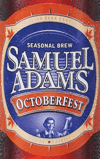As the air gets crisper and the leaves burn brighter, beer lovers turn their thoughts from summer quenchers to richer fall offerings. And no brew more appropriately fits the autumnal season, in both palate and appearance, than the coppery Märzen/Oktoberfest. Oddly named after two calendar months (Märzen is German for March), or more specifically a month and a seasonal festival, each name is important to the evolution of these plush, chewy lagerbiers.
Märzen/Oktoberfest beer symbolically captures the autumnal shift of seasons. The bright copper-orange color comes from the use of toasted Vienna and Munich varieties of malted barley.
The term “Märzen” is a remnant from a time when the brewing season’s last beers were made in spring and stored until late summer or fall. “Oktoberfest” was attached in relatively recent times, as the release of the beer coincided with the famous fall festival in Munich. They are the offspring of groundbreaking Viennese beers of the 19th century, preceding the more famously revolutionary golden pilsners of Bohemia by one year.
As 19th century brewers took advantage of technology that allowed year-round brewing, Märzen/Oktoberfest biers became a vestige of the original unforgiving, seasonal timetable. In spite of its confusing duplicity, the marriage of Märzen and Oktoberfest as a descriptive name perfectly frames the authenticity, patience and festivity of German lagerbier.
The Beers of March
Märzen has been a rather common designation for particular brews in Germany and Austria for hundreds of years. The brewing season before refrigeration lasted from the onset of the brisk fall chill until the last cool days of winter or early spring, usually in March. The reason is rather obvious: lower fermentation temperatures resulted in cleaner, more stable beer, as microbiological spoilage was much less likely. Naturally, those brewed in fall and winter could be consumed relatively fresh, but those made in March had to be consumed either immediately or stored into the summer and fall, when brewing could resume.
Those destined for the lengthiest lagering period, and perhaps brewed to a slightly higher gravity, were designated Märzenbier. Of course, long-term cold storage was not an issue, as those areas employing this method were near the Alps, and had either cold cellars or caves at their disposal. Under these conditions, strains of cold-tolerant, slow-working yeast were also unknowingly being selected and cultivated well before any sort of microbiology was understood.
During the 18th century, both Munich and Vienna were well-established brewing centers, and both used the Märzen concept as it applied to provisional beer. They differed, however, in that Vienna was brewing ales and Munich, its renowned bottom-fermented lagerbiers.
At the beginning of the 19th century, brewing began to take its first steps toward modernization, and two of the more famous brewers, Anton Dreher of Vienna and Gabriel Sedlmayr of Munich (and the Spaten-Franziskaner Brauerei), were working together, with Sedlmayr mentoring Dreher on the finer points of lager brewing.
Sedlmayr died in 1839 and the brewery was put into the hands of his sons, Josef and Gabriel II. Dreher had by now taken over the family brewery in Vienna and was using recent malting innovations to make pale base malt, one that was much lighter than the dark malts used in Munich’s lagers. Dreher’s amber brews were novel, and rivaled the pale ales being made in England at that time.
In 1841, Dreher put the finishing touch on his remarkable new brew by switching to lager brewing exclusively, his years of studying under the Sedlmayrs coming to fruition. A year later, golden pilsner beer was introduced in Bohemia, and though it may have trumped the Vienna lager in its stunning lightness, Viennese beer remained quite highly-regarded, especially among the braumeisters of Munich.














they seem to work for me. can you tell me what browser you are using?